End of the Disney Interactive Dream
by ted2112 HSM team writer
At the turn of the century Disney had a very big idea. The world was changing and they knew it. The way people interacted and got their entertainment was turning to a digital medium. In fact the rate of high speed internet connections — something we take for granted now — and the exploding processing power of home computers were moving out of the realm of the tech nerds into the homes of every day people. Disney was already involved with video games to the extent they licensed out their characters to third party developers, but now they were thinking of doing it for themselves, and their target was the massive online game.
At the time the Disney brand was riding a ten year roll. Everything the company did turned to gold, and there was concern that this emerging technology could be a missed opportunity. So, Disney did what Disney did best: hire the best and brightest talent from around the world and throw millions of dollars at the issue. What they came up with was a truly aggressive and comprehensive decade-spanning plan for social massive online games that has never been duplicated or even attempted since.
The first thing you need to make an online game is an engine to create it. In 2001 this was a problem. There were a few 3D game design engines, but Disney needed one that could hold up to a massive live online game environment and be constantly added to and improved. Nothing was available that would work well for them, so Disney turned to a virtual reality program they created for one of their theme park attractions called Aladdin’s Magic Carpet. They tweaked the program and created what would become the Panda 3D engine. With the technology in place, they were free to begin their quest into online expansion.
The newly formed Disney Online branch of the Disney Interactive division put its toe in the water with the beta version of Toontown Online. This simple and kid friendly game, which involved running around and throwing pies in other players’ faces, stayed in beta from 2001 until its official launch in 2003 while they learned the ins and out of the basics like how much server space and bandwidth was necessary. Toontown was tested, tweaked and re-tested and would eventually become the framework that would eventually lead to six massive online games. This was all new in 2001. Today we have models and a wealth of very advanced programs. But at this dawning of the online game era it was all something you had to figure out yourself and only a company with Disney’s clout and resources could have pulled it off so fast. In fact, most of the contemporary mega online games owe some part of their game-creation process to Disney Interactive research and testing.
Toontown was a huge success, and users signed up for the game by the millions. Having the Disney name on the game along with a huge and loyal and built-in fan based propelled the game to huge popularity, and Disney Interactive was ready to take their next and bigger step.
Disney turned its resources to creating Pirates of the Caribbean Online on the same Panda 3D engine. They choose this game theme because of the popularity of the Pirates of the Caribbean movie and timed the release of the on line game to coincide with the second film: Pirates of the Caribbean: Dead Man’s Chest. While this was being done, Disney turned to an outside firm called Sulake who pioneered the use of the new program Shockwave to help create a game they hoped would be the jewel in the Disney MMO crown.
Disney knew that simply releasing a game wasn’t enough. To make a truly successful game requires advertising and tie-ins, and with this in mind they produced Disney’s Virtual Magic Kingdom. The game was to be Disney’s Online’s finest moment. It was a digital version of Disneyland, and worked in cooperation with the Disney theme park division. It was a one of the very first alternate reality games where park guests could do real-world quests and buy real-world merchandise in the park that would also work in the Virtual Magic Kingdom.
The idea was that both the Interactive division and the Theme Park division would work together to support both gaming and park attendance and tourism. The game was a masterpiece of balancing the classic artistic style of Disney in a remarkably entertaining social world. The game was also aimed to younger players and chaperoned by staff with set hours that mimicked Disneyland’s to create a kid-friendly and safe alternative to other more adult games. The idea was light years head of its time and, unfortunately, doomed.
Around this time Disney acquired Club Penguin from famed game designer Lane Merrifield, who not only sold his game but came aboard the Disney Interactive leadership team and started work on the next wave of online games: World of Cars Online and Pixie Hollow, which would use the newly-established and significantly more accessible program Adobe Flash. However, by this time the wave had crested. When these two games would launch in 2008-2010, it would be into a gaming world that would look and feel drastically different.
Enough time had passed that cheap technology had gotten up to speed. Competition like World of Warcraft and Second Life had shifted online games to a much more sophisticated experience. Also, the gaming world that was previously dominated by the PC was loosing ground to the consoles. Both Sony’s PlayStation 3 and Microsoft’s’ Xbox 360 were gaining dominance, and Disney’s monthly family membership business model was loosing ground. Mobile and Smartphones were also the newly emerging technology, and the PC online game that was once state of the art now seemed antiquated.
Disney closed The Virtual Magic Kingdom under tremendous protest from the gaming community and media alike in 2008. Disney, which once brought in eight and a half million online users per game every month, was now hemorrhaging money to the tune of sixty-five million dollars, and started a major re-origination of the Interactive division. The creative gaming visionaries like Steve Wadsworth and Lane Merrifield, whose foresight launched the rated E online revolution, were being replaced by people whose specialty was downsizing and cost cutting.
Just this past week, Disney announced the closing of Pixie Hollow, Toontown and Pirates of the Caribbean Online early next month. This leaves only Club Penguin, and frankly it doesn’t have long. Disney renamed this small part of its games division to Disney Interactive Media, in what would be the first in many name changes and now is focusing on cheap iOS and Android style games like Where’s my Water.
The times have indeed changed from the year 2001, and that is the hard lesson learned not only for Disney but for a host of other online game companies ranging from Electronic Arts with Star Wars: The Old Republic to Lego Universe. For a brief moment, the massive online game reigned supreme and seemed to be the future of gaming, and Disney was leading the charge. Indeed, most successful platform games now incorporate some kind of online multiplayer option, and a kind of hybrid is being shaped; perhaps the best example of this is Sony Playstation Network’s Home. So, in a way the MMO will still live on — but not the way it was.
Sometimes when we look back we look forward. The Disney dream of creating gaming experiences in much the same way they created movies seems to have run its course, but in the process they planted the seeds that would later bloom into tangible things we use every day in our modern gaming world. All games come to an end, and many times those games that were pioneers are also victims of the same process they set in motion. In a time when the PS3 and its pre-loaded masterpiece Home are getting older and the platform world seems to be in motion yet again, we wonder what the future will be. If the Disney Interactive example has taught us anything, it is that success depends on a loyal user base, high-level leadership who believe in it, and a little magic.
You will still see the Disney logo on games like Kingdom Hearts and Disney Infinity, but those games are really made by Square Enix and Avalanche Software. Disney has become more of a publishing house than a developer now. Disney has returned to the philosophy of leasing out its characters and stamping its name on games, rather than trying to create those games as they once did.
In fact, Disney acquired Lucas Arts when the company bought LucasFilm, a developer that many have considered the very best at what they do, only to lay off the talent and farm out the Star Wars name to EA Games. In these tumultuous years since the mid 2000’s, Disney didn’t seem to know what it wanted to do and the Interactive Studios went through several confusing reorganizations and name changes like Disney Online, Buena Vista Games, Disney Internet Group, and Disney Interactive Media. Now they are known simply as Disney Interactive.
In a span of only thirteen years, we have seen the rise and fall, birth and rebirth of this giant media company. Maybe we should thank Disney for making the massive online game socially acceptable to future gamers. Or maybe we should mourn the loss of a once mighty publisher. Ether way, we continue to walk up a winding staircase with each step laid carefully on the foundation of the other, higher and higher…and hopefully better.
Share
| Tweet |


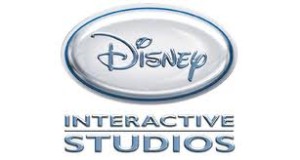
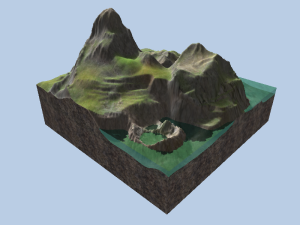
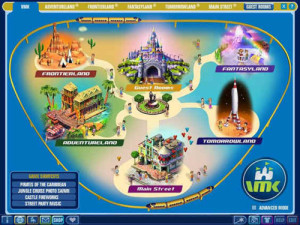
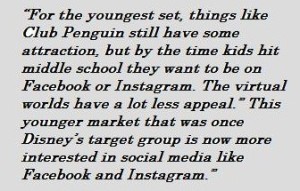

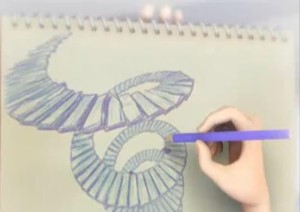
 Twitter
Twitter
Very nice read Ted. It goes to show that we as consumers truly hold the cards when it comes to the future of any game. Home is included in that (though it is much more than a game) so we need to continue to support Home if we wish it to continue and thrive for any length of time.
This article holds the keys to the future.
Being in all of these environments for so long now, I can say all of them touch what will bring it all together.
No one company will do anything more than make a lot of money building these virtual spaces. Home happens to be all over all the right things.
It will be interesting to see game developers get together with all the various game engines to build virtual communities to their fullest potential.
Maybe that’s lofty thinking…maybe not.
Great article on this topic Ted!
That was an epic article!
It is amazing to me how many games have come and gone. World of warcraft was once the biggest thing in the world now it is playing catch up to console multi player stuff. I think that Grand Theft Auto will be the new big thing but your right nothing lasts forever.
Great article! I for one played a bunch of those Disney online games (Pirates and Virtual Magic Kingdom (VMK)). I was very attached to both of those games and when VMK closed, it made me very upset. I have never found a game I like as much. I stopped playing Pirates last year because they stopped adding new content but was very surprised to hear about it closing. Some of my family plays Club Penguin from time to time. For now, I have been enjoying Home. I try not to get too attached because I wasn’t sure what was happening with Home and the PS4, there are so many speculations out there!! Anyway, great read!